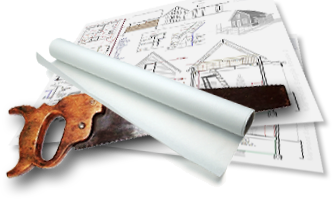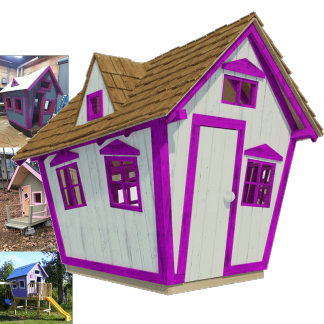The integrity of your roof is fundamental to how safe, secure, and warm your home can be. It is a part of your property that shields you from the elements day in and day out.
In truth, it’s probably something we rarely think about, until you get a leak or some shingles go missing after a storm.
Regular roof inspections and carrying out necessary repairs expediently by someone like Primo Roofing and Siding of Philly, for instance, are crucial for maintaining its integrity. It is also a strategy that will help prevent costly repairs down the line and ensure the safety of your home.
But just how often should you schedule a roof inspection? The answer can often depend on a number of factors and other relevant circumstances, such as the age and current condition of your roof.
Why are Roof Inspections Important?
Before addressing the question of frequency, let’s understand why roof inspections are so vital. The bottom line is that a healthy roof protects your biggest investment, your home.
The reasons for carrying out an inspection are numerous. For example, an inspection provides you with the opportunity to identify problems at an early stage. Catching issues early, like cracked shingles, damaged flashing, or granule loss, can prevent relatively minor issues from escalating into major, expensive repairs. Remember, a small leak today can become a major structural issue tomorrow if left unchecked.
Another compelling reason for regular inspections is that it will help extend the lifespan of your roof. Regular maintenance and timely repairs, identified through inspections, can significantly extend the life of your roof, saving you money in the long run.
In addition, a well-maintained roof is a key factor in securing your home’s true value. During a sale, a damaged or neglected roof can be a major red flag for potential buyers, potentially lowering your asking price or even derailing the transaction altogether.
Another relevant point is that a compromised roof can pose safety risks, such as falling debris or structural instability. Inspections can identify and address these hazards, helping to protect your family.
Last but not least, some insurance companies require regular roof inspections to maintain coverage. Failing to comply could lead to denied claims in the event of damage.
What are Some of the Factors That Influence Inspection Frequency?
The frequency of your roof inspections depends on several key factors. The age of your roof is a major factor, as is the type of weather that your property has to endure throughout the seasons.
Older roofs, generally those over 15-20 years old, usually require more frequent inspections. It stands to reason that as they’ve endured more weather exposure and are more susceptible to wear and tear. For this reason, annual inspections are recommended for older roofs.
If your home is in an area that is prone to severe weather, such as heavy snow, hail, high winds, or frequent storms, this should prompt you to have more frequent inspections. Also, after a major weather event, it’s crucial to have your roof inspected for any potential damage.
Another key consideration is that different roofing materials have varying lifespans and durability. Asphalt shingles, for example, typically last 15-30 years, while metal roofs can last 50 years or more. The expected lifespan of your roofing material should be considered when thinking about inspection frequency.
If your roof has experienced previous damage or repairs, it’s advisable to have it inspected more frequently to monitor the repaired areas and ensure they are holding up.
It also helps to be mindful that trees overhanging your roof can cause damage from falling branches, leaves accumulating in gutters, and excessive moisture. If you have a lot of trees around your house, more frequent inspections are recommended.
General Guidelines for Inspection Frequency
While the specific frequency depends on what factors already mentioned above, apply to your property, and circumstances.
For most roofs, an annual inspection is a good practice and makes sound economic sense. This level of frequency allows you to catch minor issues early and prevent them from becoming major problems.
You should always schedule a roof inspection after a major weather event, such as a hurricane, tornado, hailstorm, or heavy snowfall.
If your roof is older, increase the inspection frequency to twice a year, ideally once in the spring and once in the fall.
However, if you notice any signs of roof problems, such as missing shingles, leaks, or a sagging roof line, schedule an inspection immediately, regardless of the last inspection date.
What Happens During a Roof Inspection?
A professional roof inspection involves a visual assessment of the roof’s exterior and the interior, if it’s accessible. A qualified inspector will look for a number of potential issues.
They will look for signs of shingle damage, searching for any cracked, missing, or curled shingles. The inspection will include a check for excessive granules in gutters or around downspouts, and any signs of flashing damage. This means seeing if they can spot any cracks, gaps, or deterioration in the flashing around chimneys, vents, and skylights.
Evidence of any water stains, dampness, or mold growth in the attic or on ceilings, will also be noted, as will signs of structural issues. This involves looking for sagging roof lines, damaged rafters, or other signs of structural problems.
Any potential gutter issues will also be checked for. This covers signs of clogged gutters, damaged downspouts, or improper drainage.
The inspection will also verify if there are any ventilation problems. Inadequate ventilation can lead to moisture buildup and damage.
Who Should Perform a Roof Inspection?
While you can often visually inspect your roof from the ground, it’s best to hire a qualified roofing contractor for a more thorough inspection. A professional has the expertise and experience required to identify potential problems that might be missed by an untrained eye.
The cost of a roof inspection can vary depending on the size of your roof, the complexity of the job, and the location. However, the cost of an inspection is a small price to pay compared to the cost of major roof repairs or replacement if a problem goes unnoticed.
Without a doubt, regular roof inspections should be viewed as an essential part of home maintenance. It’s a small investment that can save you a lot of money and headaches in the long run.
Contact a professional roofing company and get the peace of mind that comes with the knowledge that your roof is in good condition, and protecting your home.








